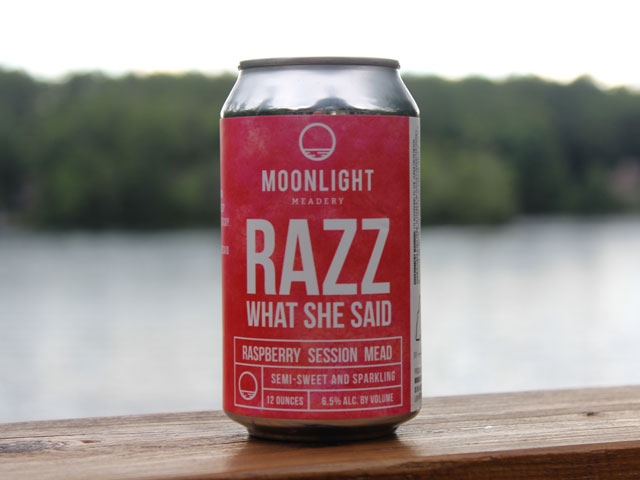What is Mead?
Mead is a thick, potent, and fermented alcoholic beverage that made with honey, water and yeast. Some refer to the fermented beverage as a honey wine.
Written by CraftJack | Updated | 8 min read
Interesting Tools
- Beer BrüMate Hopsulator
- Brewing Northern Brewer Beer Making Kit
- Spirit Crystal Whiskey Glasses
- Wine Wine Decanter/Aerator

We’ve always thought of it as the beverage of choice for the Vikings. To be clear, the ancient Vikings, not the Minnesota Vikings. Though we’d be glad to enjoy some Mead during a home game.
Skol!
(for those of you that don't know, Skol is a drinking toast)
History of Mead
We’re privileged to announce that the greatest place in the history of time to acquire and drink some Mead was at the village Mead Hall. If you were successful on the field of battle that day, you were served the Hero’s Portion of meat and Mead. Outstanding!
What makes Mead unique, other than the Viking story above, is that Mead is the oldest alcoholic beverage in the world. There was evidence of mead in the days of yore, when the Ancient Romans and Ancient Greeks wandered the planet.
Ancient Northern China
According to the Kinsale Mead Company, the drink was consumed in China back in 6500 BCE. While it might not have been precisely the Mead we know and love today, it was still a fermented honey-based liquor that would get you drunk.
In a study published in 2004 on the Fermented beverages of pre- and proto-historic China, researchers found that, “The available chemical, archaeobotanical, and archaeological evidence for the Jiahu jars and basins converge to support the hypothesis that they were used to prepare, store, and serve a mixed fermented beverage of rice, honey, and a fruit. Direct chemical evidence of alcohol is lacking, because this compound is volatile and susceptible to microbial attack. Fermentation of the mixed ingredients, however, can be inferred, because the “wine yeast” (Saccharomyces cerevisiae) occurs in honey and on the skins of sugar-rich fruits. Once the juice has been exuded from the fruit or the honey diluted down, yeast begin consuming the monosaccharides and multiplying, within a day or two in warmer climates.”
Apparently all this took place in ancient pottery vessels, or something like that. Kind of wild to consider the styles of mead that were in existence back then. Plus, what did kids drink? You couldn’t saunter down to the grocery store for a bottle of Apple Juice or some Grape Juice boxes. So maybe they drank mead too? Hey, it’s the nectar of the gods ...
Then to Now
That was all long before the Craft Beer & Beverage explosion of the last decade, obviously. Our ancestors couldn’t just snap a photo and upload their favorite cyser to Untappd the way that they can today. In order to drink mead, someone had to learn how to make it, which made the creation of the ambrosia a dedicated skill and a pliable trade. Interest in that trade is picking up steam.
Craft beer’s resurgence has spurred on the mead industry. So if you’re an interested party, then you’re in luck, because we’re going to discuss how to get the mead made next.

Ingredients to Make Mead
Fruit, Honey, Yeast and Water are the main ingredients in making mead. You can experiment after you’ve gained some experience with the fermentation process. In fact, you will need to take a different approach for each general type:
- dry mead
- semi-sweet
- sweet mead
Varieties of Mead
There are a surprisingly large number of different types of mead available for commercial purchase. Add to that probably a dozen more in basements and cellars we don’t even know about. Much like Craft Beer and Artisanal Wine, each variation represents an experiment in ingredient selection and fermenting technique.
Consider wine making and the blending of different types of grapes. Or, beer brewing using a variety of experimental hops in unique combinations. The natural ingredients that went into mead making colored the bouquet of flavors, and ABV, that arose from the finished product.
For instance, the flavor profile of a traditional mead would vary significantly over the current production based on the locality of the honeybees alone. Add in different fruit juices, maybe an orange blossom or two, some proprietary yeast, and the resulting fermentation will make mead taste like nothing the Ancient Greeks drank.
It would be akin to comparing ancient ambrosia to a Mountain Dew Hard Seltzer.
What is Bochet?
Bochet is a darker Mead that has been produced using crystallized honey. We learned this from a MakersMead.com recipe (Bochetomel). It’s reportedly fruity and toasty.

What is a Braggot?
Braggots are a combo of Beer and Mead. The last time we had a good braggot was at Burnt Timber Brewing in Wolfeboro, New Hampshire. If you’re looking for Great American Mead, but at a brewery, give them a shot.
What is Hydromel?
Hydromel, as the hydro implies, is a Mead that has a bit more water content and is reduced in intensity across all things: honey flavor, ABV, etc.
What is Melomel?
Melomel is the term that Mead Makers use when fruit juices are added to traditional Mead. Pyment is the Grape Juice version of Melomel.
What is Metheglin?
Metheglin is a style of Mead that is a bit more medicinal. Metheglin is where the cloves, the herbs, the spices really come out in the drink making process.
What is Sack Mead?
Sack Mead is the opposite of Hydromel, in that it’s the more intense version of mead. Like Tim the Toolman Taylor, the Mead is going to need MORE HONEY!
What is Tej?
Tej is a honey wine made in Africa, specifically Ethopia.
Health Benefits of Mead
There are no health benefits to drinking Mead.
Some believed it was (is?) a probiotic. Some drank it for vitality. Some thought of it as medicine. But once again, there are no health benefits to drinking Mead. And, you're still going to get a headache from drinking it.
However, there are benefits to drinking Mead over other alcoholic beverages. For instance, Mead is lower in calories than that Ultimate Mudslide you order down at TGIFriday’s. It’s also Gluten-Free, for those of you that require, or desire, gluten-free drinks when consuming alcohol. And, it’s made with honey, so the fermentable sugar is not white refined, but rather straight from the wildflower pollen.
And, we’re told that honey has adiponectin, which helps with sugar regulation and inflammation. Not sure it applies to Mead, but we’re willing to let the placebo effect takeover, Am-I-Rite?!
Places to Buy Mead
Meaderies
The best place to purchase Mead is at a meadery. The employees (quite often the maker of the Mead) will have the most extensive knowledge of anyone you will meet regarding the drink.
- Alaska Ciderworks and Meadery (Denali Brewing Company)
- Apiary Cider, Mead, and Hard Kombucha
- Great Society Cider and Mead
- Moonlight Meadery
- Raging Cider and Mead Company
- Sap House Meadery
Distilleries
Some distilleries also make Mead. There is no real separation from a meadery, it’s just that they also make other spirits as well.
Breweries
Like meaderies and distilleries, some breweries also make it.
Cideries
Sensing a common trend, right? Cideries also produce meads.

Wineries
Might as well get vineyards and wineries on the list since we have everyone else. Nashoba Valley Winery / Bolton Beer Works is one such example. They sell a Cyser, half Mead / half Cider, that is delicious.
In-Person
Large retailers such as Total Wine and small craft beverage shoppes often have mead for sale. The latter because it appeals to the interested nature and customer profile, and the former because it carries everything.
Online
Drizly, Tavour and a whole host of online distributors seek to expand their business by offering as many products as possible.
Homebrew Shops
Some homebrewing shops have a licensed to sell. They would be another place to try to acquire high quality meads from.

FAQs
How many calories are in Mead?
Mead is made up of approximately 700 calories per pint. Or, 350 calories per 8oz serving. Broken down further, that’s about 44 calories per ounce.
What is the alcohol content in Mead?
Mead has an enormous range in ABV. That range runs on average from 5%-20%.
Will Mead get you drunk?
One serving of 5% ABV Mead is unlikely to get you drunk. One serving of 20% ABV Mead could very well get you drunk, depending on all of the factors that a body deals with when it comes to inebriation and intoxication. Always be responsible.
Is Mead gluten-free?
Yes, Mead is a gluten-free alcoholic drink. Same with cider. Plus, there are plenty of Gluten-Free Beers available for purchase these days.
Does Non-Alcoholic Mead exist?
Yes, Non-Alcoholic Mead does exist. Check out the May Day Mead Non-Alcoholic Recipe if you want to make some. In many ways, it’s a lot like Fire Cider.
If you’re interested more in NA Beer, check out our list of the Best NA Beers in the market.
How long does it take to make Mead?
It takes on average 2-8 weeks to make Mead. It all depends on the recipe, the ingredients, and the style of Mead that you are trying to ferment.
Can you use Maple Syrup to make Mead?
Yes, you can use Maple Syrup to make Mead. This is known as Acerglyn.
Mead vs Beer
The primary differences between Mead and Beer are that Mead is typically stronger in alcohol content and a bit more viscous. The flavor profile is also vastly different, as Beer is made from grains and Mead from honey.

Mead vs Cider
Mead and Cider are closely related. However, Mead tends to be a bit more boozy.
Mead vs Liquor
Mead and Liquor can share some similar qualities, depending on relative strength of alcohol and overall mouthfeel - and burn at the 20% ABV range. However, the flavors, if we except Bärenjäger (Bärenjäger!!!), are vastly different.
Mead vs Wine
Mead and Wine, much like Mead and Cider, are closely related. However, wines are traditionally made with a variety of grapes. Grapes and honey, while sweet in their own right, aren’t two peas in a pod.
Moving On
Mead is a pretty sweet beverage (pardon the pun). It’s a good one to turn to when you’re sick of IPAs or Grape Wine.
It’s also a great choice when you want to turn into Sigurd and defeat your personal Fafnir. Ok ok, bad Beowulf joke.
Article Sources
- https://www.homebrewersassociation.org/beyond-beer/braggot-the-best-of-mead-and-beer/
- https://getbrewsy.com/blogs/recipes/mead
- https://flavorman.com/3-surprising-things-you-didnt-know-about-mead
- https://www.healthline.com/nutrition/mead
- https://www.liquor.com/articles/10-facts-about-mead/
- https://en.wikipedia.org/wiki/Mead
- https://mead-makers.org/
- https://www.growforagecookferment.com/how-to-make-a-gallon-of-mead/
- https://www.ncbi.nlm.nih.gov/pmc/articles/PMC539767/
- https://www.vikingalchemist.com/mead-blog/2020/1/30/are-there-health-benefits-to-drinking-mead
- https://www.paeats.org/news/2014/top-8-things-didnt-know-mead/
- https://www.growforagecookferment.com/how-to-make-a-gallon-of-mead/
- https://myfermentedfoods.com/how-make-maple-mead/
- https://en.wikipedia.org/wiki/Bochet
- http://dewineries.org/2016/07/the-experts-at-liquid-alchemy-the-different-kinds-of-mead/
- https://www.theguardian.com/lifeandstyle/wordofmouth/2012/feb/15/how-to-make-metheglin
